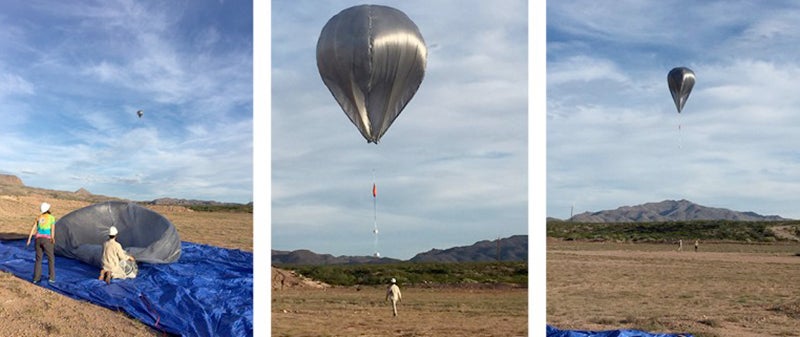
The stratosphere is a relatively quiet place. A team of researchers from Sandia National Laboratories in the US took advantage of this calm to send solar balloons equipped with highly sensitive microphones. What they recorded has no explanation yet.
Daniel Bowman and his colleagues at Sandia Laboratories have sent weather balloons to this edge of the atmosphere with the goal of recording the sounds that get there. Their results have just been submitted at 184 Congress of the American Vocal Society held this week in Chicago, and they are interesting. First of all, they recorded sounds that are impossible to record at other points in the atmosphere where there is a lot of interference, such as the sound of crashing waves, thunder, or the sounds of human activity such as aircraft turbines or explosions. This alone is quite shocking considering that they have been recorded at altitudes of around 22,000 metres.
The sounds are recorded by micrometers, a kind of instrument capable of recording more frequencies than conventional microphones, which are commonly used to monitor volcanoes. The data is then checked against the GPS data from the balloons for triangulationLar its origin. The low cost of the balloons allows dozens of them to be launched and each travel hundreds of kilometers, making it possible to collect a lot of acoustic data from the stratosphere.

“Our balloons are giant plastic bags with a little bit of carbon dust in them to darken them,” Bowman explained during his talk at the conference. “We built them using painter’s plastic sheeting like you find at the hardware store, duct tape, and coal dust from the fireworks store. When the sun shines on the darkened balloons, the air inside heats up and gains buoyancy. This passive solar energy is enough to move the balloons from the surface a distance of more than 20 km (66,000 ft) into the sky. Each balloon only needs about $50 in materials and can be built the size of a basketball court.”
Aside from all the recognizable sounds recorded in the stratosphere, the researchers found other sounds that, to this day, have no clear origin. “In the stratosphere we found infrasound signals that were recorded at a frequency of a few times an hour on some flights, but the source of these sounds is completely unknown,” Bowman explained.
The researchers aren’t as caught up in the obscurity of these sounds as they might seem. Bowman and his colleagues focused on future uses for their balloons. “Our work has implications for the study of eruptions, volcanic eruptions, and other phenomena in remote regions of the Earth,” Bowman said. It also opens the door to the use of seismic detectors aboard balloons to study the seismology of Venus. This last detail is important because it allows for this Study the infernal neighboring planet without having to land the probes in an inhospitable place Surface.

“Proud web fanatic. Subtly charming twitter geek. Reader. Internet trailblazer. Music buff.”

:quality(85)/cloudfront-us-east-1.images.arcpublishing.com/infobae/TEQF6EONZRFGLLLDIDD4L2O4EE.jpg)

:quality(75)/cloudfront-us-east-1.images.arcpublishing.com/elcomercio/XU32LRAEZFDDPNVHLFU3CKVBYY.jpg)



More Stories
How to create 3D videos with my iPhone, it will be very useful even for your business
NASA discovers an anomaly in the Earth’s magnetic field that could have serious consequences for humans
Can the Earth be divided into two parts?